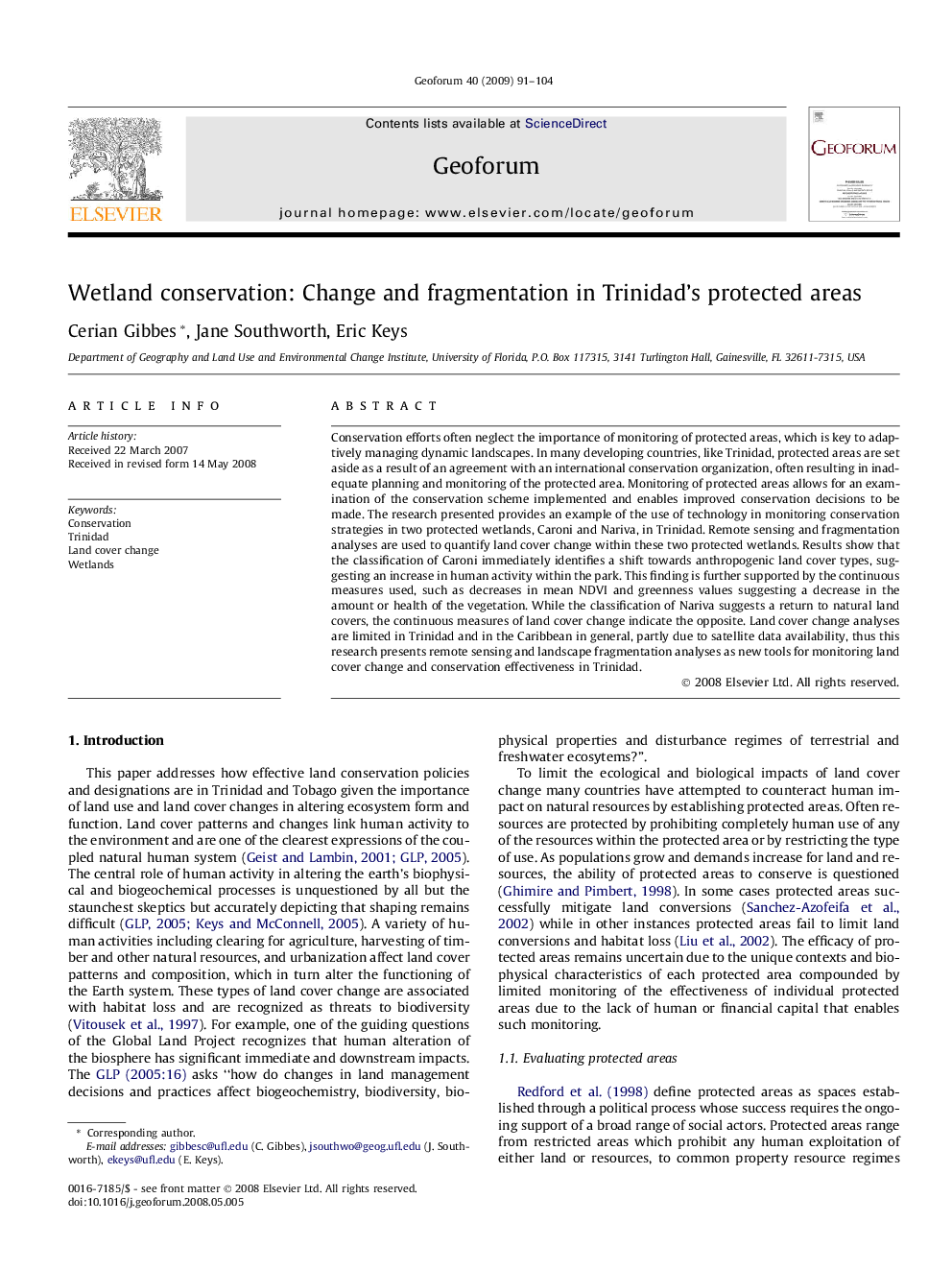| Article ID | Journal | Published Year | Pages | File Type |
|---|---|---|---|---|
| 5074750 | Geoforum | 2009 | 14 Pages |
Abstract
Conservation efforts often neglect the importance of monitoring of protected areas, which is key to adaptively managing dynamic landscapes. In many developing countries, like Trinidad, protected areas are set aside as a result of an agreement with an international conservation organization, often resulting in inadequate planning and monitoring of the protected area. Monitoring of protected areas allows for an examination of the conservation scheme implemented and enables improved conservation decisions to be made. The research presented provides an example of the use of technology in monitoring conservation strategies in two protected wetlands, Caroni and Nariva, in Trinidad. Remote sensing and fragmentation analyses are used to quantify land cover change within these two protected wetlands. Results show that the classification of Caroni immediately identifies a shift towards anthropogenic land cover types, suggesting an increase in human activity within the park. This finding is further supported by the continuous measures used, such as decreases in mean NDVI and greenness values suggesting a decrease in the amount or health of the vegetation. While the classification of Nariva suggests a return to natural land covers, the continuous measures of land cover change indicate the opposite. Land cover change analyses are limited in Trinidad and in the Caribbean in general, partly due to satellite data availability, thus this research presents remote sensing and landscape fragmentation analyses as new tools for monitoring land cover change and conservation effectiveness in Trinidad.
Related Topics
Social Sciences and Humanities
Economics, Econometrics and Finance
Economics and Econometrics
Authors
Cerian Gibbes, Jane Southworth, Eric Keys,
